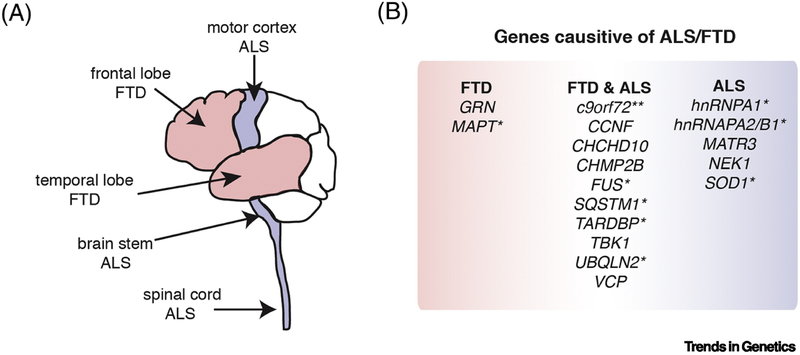Figure 2. The ALS/FTD disease spectrum.
A) Upon autopsy many regions of the brain can present with neuronal loss and pathology in ALS and FTD. However, the most consistently affected regions in ALS are the motor cortex, brain stem and spinal cord, and for FTD the frontal and temporal cerebral lobes (reviewed in [98, 111]). B) Genes that when mutated give rise to either ALS, FTD or both ALS and FTD (reviewed in [52]). *Indicates genes whose protein products are known to aggregate in disease tissue. ** The mutation in c9orf72 is an intronic G4C2-hexanucleotide expansion that gives rise to abnormal accumulation of G4C2-hexanucleotide containing RNA and dipeptide-repeat proteins that are translated from the intronic repeat.

